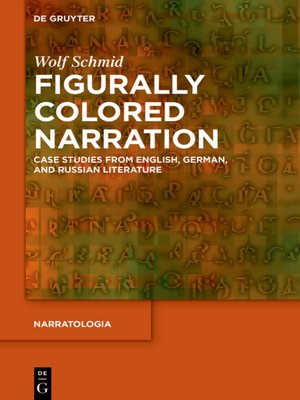Figurally Colored Narration
ebook ∣ Case Studies from English, German, and Russian Literature · Narratologia
By Wolf Schmid

Sign up to save your library
With an OverDrive account, you can save your favorite libraries for at-a-glance information about availability. Find out more about OverDrive accounts.
Find this title in Libby, the library reading app by OverDrive.



Search for a digital library with this title
Title found at these libraries:
| Library Name | Distance |
|---|---|
| Loading... |
Figurally colored narration (FCN) is narrator's discourse (whether in the first or third person) that adopts salient features of character's text, mainly valuation and designation, without signaling the figural part in any way. Unlike free indirect discourse, FCN does not refer to current acts of consciousness, but to typical, characteristic segments of the character's text. There are two main modes of FCN: contagion of the narrator's discourse with a character's text, and the more or less ironical reproduction of a character's text in narrative discourse. In the latter case, the narrator's criticism may refer to either the content of the character's text or to its form of expression.
This study begins with a definition and an example of FCN as a narrative device, followed by an analysis of terms used for FCN in German, Anglophone and Russian literary criticism. Building on the perception of FCN as a phenomenon of interference between narrator's and character's text (text interference), this book analyses the function and applications of FCN in narratives written in German, English and Russian.






